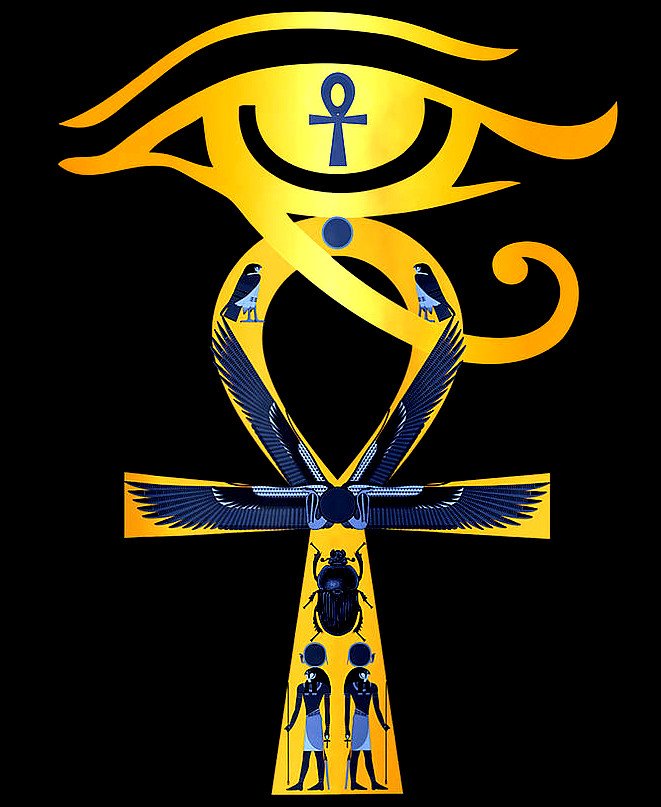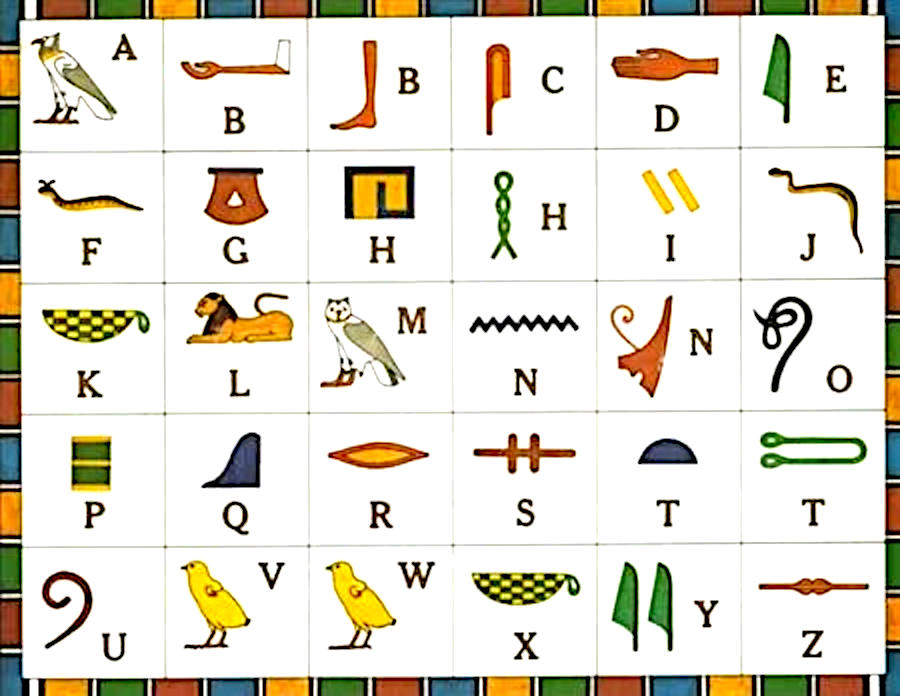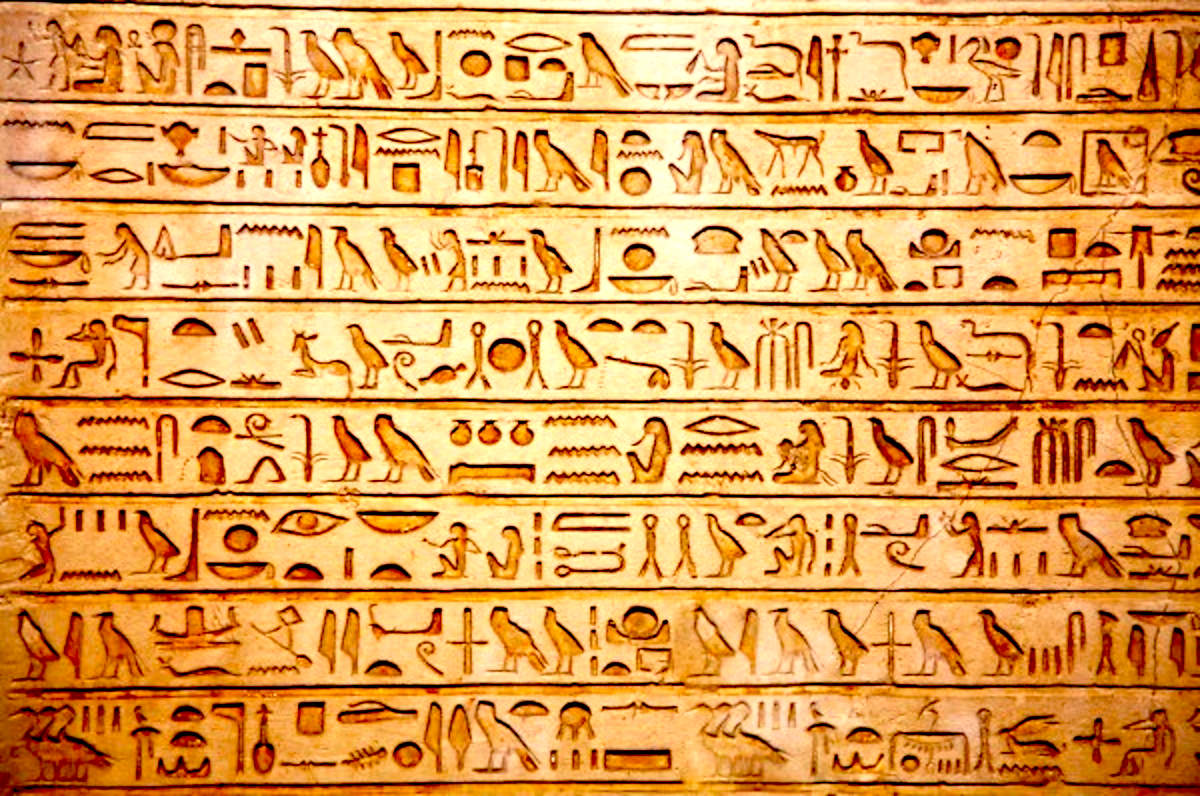
Ancient
Egyptian Ankh and Eye of Horus
In AD 391 the Byzantine Emperor Theodosius I closed all pagan temples throughout the empire. This action terminated a four thousand year old tradition and the message of the ancient Egyptian language was lost for 1500 years. It was not until the discovery of the Rosetta stone and the work of Jean-Francois Champollion (1790-1832) that the
Ancient Egyptians awoke from their long slumber. Today, by virtue of the vast quantity of their literature, we know more about Egyptian society than most other ancient cultures.
The script was developed about four thousand years before Jesus
Christ and there was also a decimal system of numeration up to a
million. Unlike other cultures the early picture forms were never discarded or simplified probably because they are so very lovely to look at.
Hieroglyphs were called, by the Egyptians, “the words of God” and were used mainly by the priests.
These painstakingly drawn symbols were great for decorating the walls of temples but for conducting day to day business there was another script, known as hieratic This was a handwriting in which the picture signs were abbreviated to the point of abstraction.
Hieroglyphs are written in rows or columns and can be read from left to right or from right to left. You can distinguish the direction in which the text is to be read because the human or animal figures always face towards the beginning of the line.
Also the upper symbols are read before the lower.

The hieroglyphic system of writing was complex and very labor intensive. The first hieroglyphics were used on buildings and tombs and it is believed that the Egyptians first began developing this system of writing around 3000 BC. In the following list you'll find some examples of hieroglyphics. These are the basic symbols the ancient Egyptians used in their writing, but there are many more.
This writing system was extremely complex and enormously labour intensive. Egyptologists believe hieroglyphics were first employed on temple complexes,
tombs and public buildings.
Initially, ancient Egyptians used 700 to 800 signs. By c. 300 B.C. this written language had ballooned to encompass more than 6,000 signs. Daily life or nature appears to be the inspiration for many of these additional hieroglyphs.
Only the elite of Egyptian society such as the royal family, nobility, priests and scribes were able to read hieroglyphs. These groups comprised less than three per cent of the Egyptian population. A basic mastery of hieroglyphs involved knowing 750 signs. A master scribe memorized more than 3,000 hieroglyphs.
Scribes were educated at special schools with some scribes beginning their formal training at 12 years of age. Students practised on wood or clay block and started by memorising 200 different hieroglyphs. Coloured ink was used for pictures, while black ink was used for words.

The Structure Of Hieroglyphs
Today, Egyptologists structure Egyptian hieroglyphics into three distinct classes with some images belonging to more than one class.
1 - Phonograms are signs representing a specific sound. A single sign can represent the sounds of two or more letters
2 - Ideograms are hieroglyphs associated with ideas rather than sounds, such as those representing the gods
3 - Determinatives are a class of hieroglyphs that were neither translated nor spoken. They assist with making the meaning of individual words clearer and also denotes the end of words. The ancient Egyptians did not use any form of punctuation to mark the end of sentences or spaces between words.
The Waning Of Ancient Egyptian Hieroglyphs
During the Ptolemaic Dynasty (c. 332-30 BCE) followed by the
Roman Period (c. 30 BCE-395 CE), the influence of first Greek then Roman culture steadily grew. By the second century CE, Christianity had made inroads into the influence traditionally wielded by Egypt’s cults. As the Coptic alphabet, a development of the
Greek uncial alphabet spread, the use of hieroglyphs waned as Coptic became the final ancient Egyptian language.
As with many other aspects of their culture, the ancient Egyptian hieroglyphic system of writing proved to be both robust and enduring. Without its 3,000 signs, much of the ancient Egyptian culture would be shrouded forever from us.
REFERENCE
https://discoveringegypt.com/egyptian-hieroglyphic-writing/egyptian-hieroglyphic-alphabet/
https://www.givemehistory.com/the-hieroglyphic-alphabet
